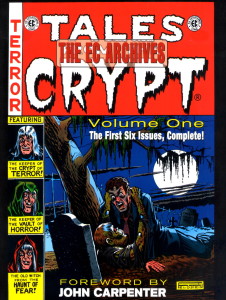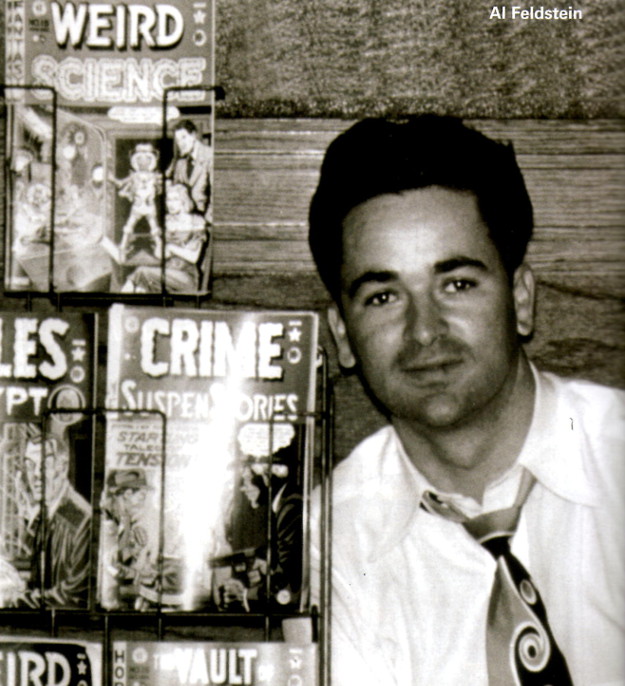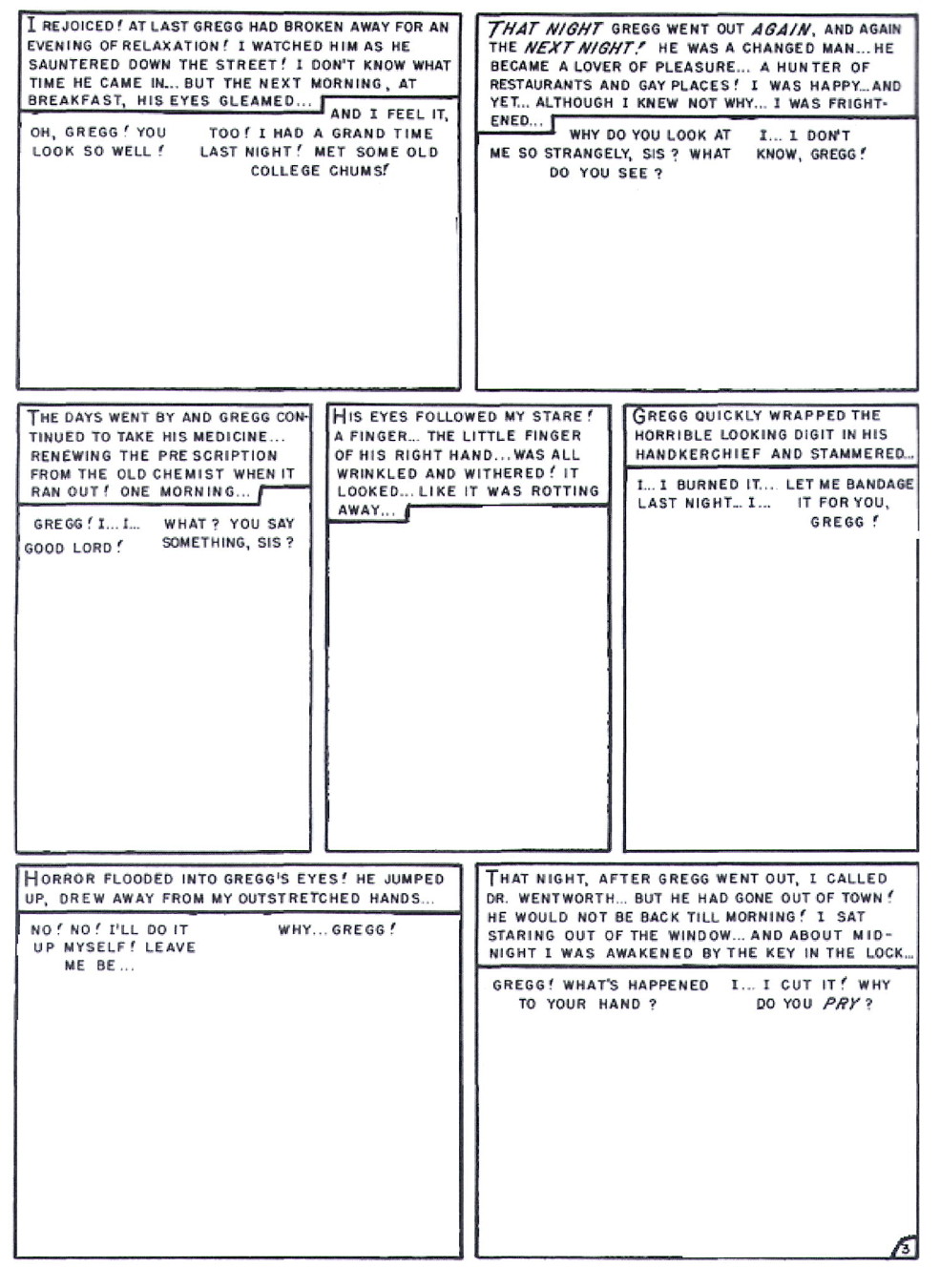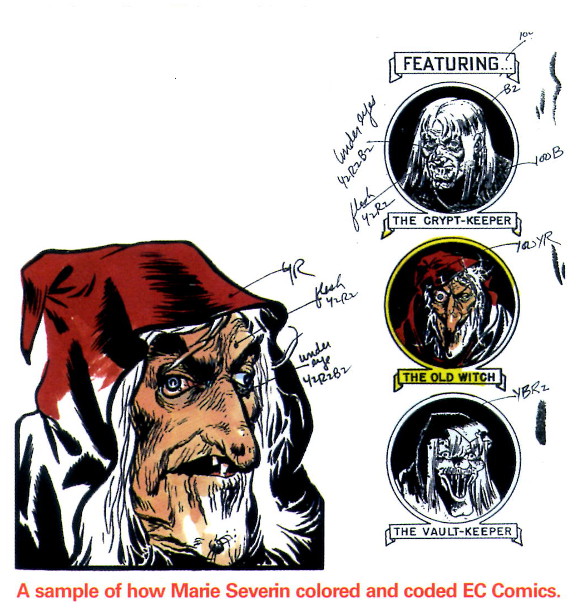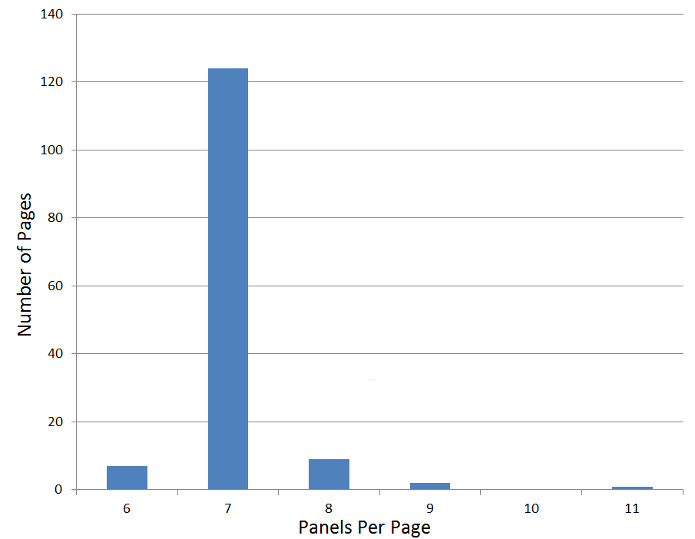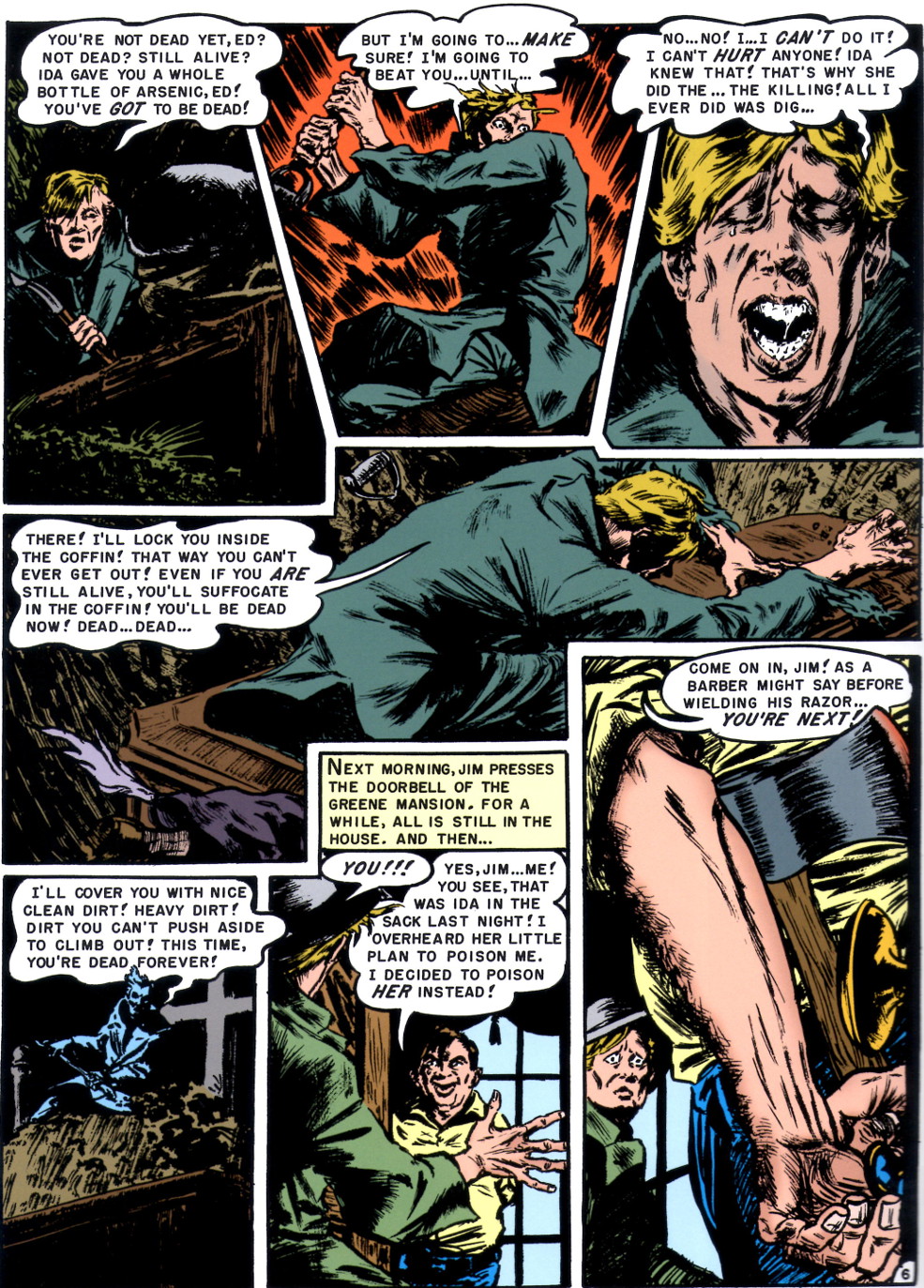On whim, I decided a few weeks ago to pull off the shelf the hard cover glossy reprint volume of The EC Archives: Tales from the Crypt. This reprint volume contains stories originally found in Crypt of Terror #17-19 and Tales from the Crypt #20-22. Taken collectively, these six issues comprise what are some of the best loved and most talked about tales in the history of comics.
Each issue contains four short stories, usually with the pattern of two stories seven-pages long, one story with 8 and another with 6. Additional text material, mostly a short story or two of about 400-600 words in length, rounded out the offering. All told, the reprint edition features 24 stories with total of 167 pages of illustrations.
The volume contains a variety of extra materials, including a forward from John Carpenter and a variety of blurbs and commentaries from Russ Cochran on the background on the men behind this publication. In particular, he talks about Al Feldstein as the driving creative force behind one of most prolific and creative periods in popular art evolved.
Cochran credits Feldstein with almost single-handedly writing and editing the stories for the EC line of comics. These stories were conceived in conferences between Feldstein and EC Publisher Bill Gaines. In addition to those contributions, Feldstein supplied cover art and pencils and inks many stories (least one of the stories in this volume).
Once the stories were conceived, Feldstein would script the story on large art boards with no illustrations. The ‘before’ part of the method would produce a page looking like
(taken from the story Rx…Death!). The pages, so scripted, would be given to the artist to provide the illustrations and inkings and also the stem on the word balloons. Six different artists were employed (in addition to Feldstein) for the stories featured in the reprint volume. Once they had finished a completed page looking something like this
was returned for editorial approval and eventual coloring.
Compare the Feldman method with the traditional publisher’s assembly line method. The first step in the assembly line is the hiring a writer to generate a type-written script that has the captions, dialog, and a brief description of the action. The script then moved to the editor would look over the script and layout the panels for the artist to pencil in. Once the penciler was done with the line art and second artist would ink the page and the letterer would fill in the captions and the dialog balloons. The completed art made its way back to the editor for a final check before it went off to coloring. The Feldman method basically combined many of these steps into one stop (he was writer, editor, and, occasionally, artist).
A word or two about coloring is in order. The EC Comics line had a distinct look and feel in both story content and in line style and color. The coloring, in particular, made the EC look standout and much of the coloring was performed by Marie Severin using the technology of her time. All told there were 10 colors: 3 types of blue, red, and yellow plus 1 black (basically a primitive CMYK). Coloring was done by hand using a code for the specific mixing. For example, R2Y2 created a beige color used for skin and flesh tones. A sample of Marie Severin’s hand markups is shown here
and a color-finished page looked like
It is remarkable the expressiveness that results even in the face of these limitations. In fact, I find the simple flat tones in the color to be more interesting that the modern techniques that use highlights, gradient fills, textures, and layering. This old approach has a charm and an atmosphere that sets for comics a mood similar to what black-and-white film set for film noir.
Despite their success, the EC way does have some draw backs. One of the most obvious critiques is that the page layout was formulaic. Out of 167 individual pages of comics art, 24 of them introduce the story and usually consist of either a single panel splash or a 3 panel set of establishing shots, with the former being for the first story in the issue and the latter configuration reserved for the remaining three. Of the 143 inside story pages, 124 of them have 7 panels and of those, 116 have these panels distributed over 3 rows in one of three patterns of 3-2-2, 2-3-2, or 2-2-3, where the numbers describe the panels in each of the three rows (e.g., the page from Rx…Death! shown above is a 2-3-2). The breakdown on panel distribution is
As the series progressed, some stories would experiment with modified layouts where the number of panels in the rows would depart from the traditional or where the panels would hang over a row above or below. Even rarer still are examples are gutterless panels or panels with slanted gutters. The following page shows the most unconventional format to be found in the reprint volume (taken from the story The Hungry Grave)
Notice that the word balloons overlap the panels, often invading the gutters and that the non-rectangular layout for the top and center rows.
Notwithstanding these objections, the EC way made for fun stories brought to life in a colorful and compelling way. This style is a classic that will never go out of fashion not matter what technological advances come our way in the years to come.

